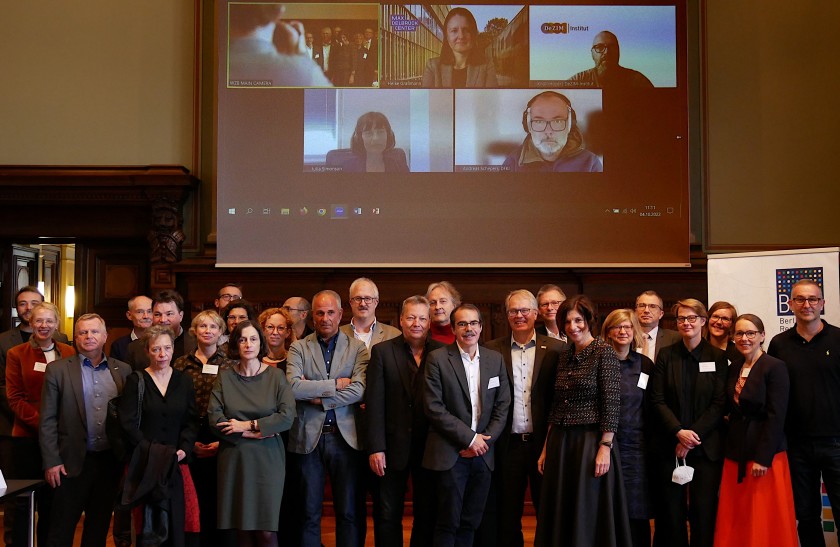For strong non-university research in Berlin

With greater impact: As an association, BR50 can promote networking in the Berlin research area even more strongly.
The non-university research institutions in Berlin will work even more closely together in the future. Their association Berlin Research 50 (BR50), founded in 2020, has joined forces to form a registered non-profit association on 4. October 2022. Together, the research institutions want to further develop and strengthen Berlin as a science location.
Representatives of the institutions gathered at the Social Science Research Center Berlin (WZB) for the official founding of the association. A five-member board was also elected. Following the founding, the association now comprises 27 research and science institutions, including Leibniz and Max Planck Institutes, Helmholtz Centres and federal departmental research institutions. Other non-university institutions in Berlin are associated with the association as partners in the network.
As an association, BR50 will support its member institutions even more in networking with each other and with other scientific actors in Berlin and represent the interests of non-university institutions.
You can find more information on the BR50 page.
BR 50 Podcast - lots of exciting research
Many societal challenges, such as climate change, are far too complex for one scientific discipline to solve alone. But together they are making progress. The BR 50 podcast gives an insight into how versatile the research of "non-university" scientists is. In two podcast episodes, listen to how the Helmholtz Centre Berlin is advancing the energy transformation in society with its research. Here you get to the podcast (in German).
(sz)
https://www.helmholtz-berlin.de/pubbin/news_seite?nid=24132;sprache=en
- Copy link
-
Battery research with the HZB X-ray microscope
New cathode materials are being developed to further increase the capacity of lithium batteries. Multilayer lithium-rich transition metal oxides (LRTMOs) offer particularly high energy density. However, their capacity decreases with each charging cycle due to structural and chemical changes. Using X-ray methods at BESSY II, teams from several Chinese research institutions have now investigated these changes for the first time with highest precision: at the unique X-ray microscope, they were able to observe morphological and structural developments on the nanometre scale and also clarify chemical changes.
-
BESSY II: New procedure for better thermoplastics
Bio-based thermoplastics are produced from renewable organic materials and can be recycled after use. Their resilience can be improved by blending bio-based thermoplastics with other thermoplastics. However, the interface between the materials in these blends sometimes requires enhancement to achieve optimal properties. A team from the Eindhoven University of Technology in the Netherlands has now investigated at BESSY II how a new process enables thermoplastic blends with a high interfacial strength to be made from two base materials: Images taken at the new nano station of the IRIS beamline showed that nanocrystalline layers form during the process, which increase material performance.
-
Hydrogen: Breakthrough in alkaline membrane electrolysers
A team from the Technical University of Berlin, HZB, IMTEK (University of Freiburg) and Siemens Energy has developed a highly efficient alkaline membrane electrolyser that approaches the performance of established PEM electrolysers. What makes this achievement remarkable is the use of inexpensive nickel compounds for the anode catalyst, replacing costly and rare iridium. At BESSY II, the team was able to elucidate the catalytic processes in detail using operando measurements, and a theory team (USA, Singapore) provided a consistent molecular description. In Freiburg, prototype cells were built using a new coating process and tested in operation. The results have been published in the prestigious journal Nature Catalysis.
